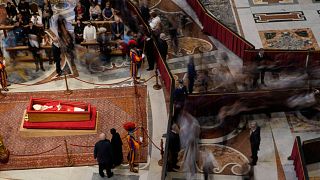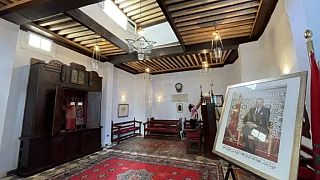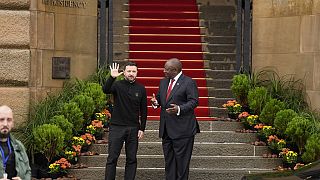Morocco
The earthquake shook most of Morocco and caused injury and death in many provinces, including Marrakech, Taroudant and Chichaoua.
The epicenter was high in the Atlas Mountains about 70 kilometers (44 miles) south of Marrakech in Al Haouz province.
Seismologist Richard Walker from the University of Oxford says multiple factors made Morocco's Friday evening quake so deadly.
"It is an earthquake occurring in an area with a relatively large population, and especially a population where there's quite a lot of vulnerability, in terms of the building types to earthquake shaking. So, construction using unreinforced masonry, the kind of more rural styles that sadly are not very strong when earthquakes hit," he explains.
"One big thing as well is the fact that it occurred in the nighttime, past 11pm local time, and people were at home, they were asleep, in buildings that would have been quite vulnerable to the shaking. And so, a lot of people would have become trapped within the rubble."
Friday’s magnitude-6.8 earthquake was Morocco’s strongest in over a century, but, though such powerful tremors are rare, it isn’t the country’s deadliest.
Just over 60 years ago, the country was rocked by a magnitude-5.8 quake that killed over 12,000 people on its western coast, where the city of Agadir, southwest of Marrakech, crumbled.
That quake prompted changes in construction rules in Morocco, but many buildings, especially rural homes, are not built to withstand such tremors.
The U.S. Geological Survey says there had not been any earthquakes stronger than magnitude 6.0 within 310 miles (500 kilometers) of Friday's tremor in at least a century.
Northern Morocco experiences earthquakes more often, including tremors of magnitude 6.4 in 2004 and magnitude 6.3 in 2016.
Elsewhere this year, a magnitude 7.8 temblor that shook Syria and Turkey killed more than 21,600 people.
"If you compare in Turkey, in Turkey, the rupture created by the earthquake was 350 kilometers long. So, the damage was spread over several regions," explains Remy Bossu, head of the European-Mediterranean Seismological Centre (EMSC).
"So, the scale of disaster was an order of magnitude higher in Turkey. But still, the one in Morocco is a strong earthquake."
The United Nations estimates that 300,000 people were affected by Friday night’s quake, made more dangerous by its relatively shallow depth.
Moroccan soldiers and aid teams in trucks and helicopters are battling to reach remote mountain towns devastated by a monstrous earthquake that killed more than 2,400 people.
"It is clearly a difficult period, especially because at the moment, people are trying to clear to the rubbles. And, of course, if there is a shock, then remaining new buildings can collapse," explains Bossu.
"So, it is a real safety issue for the rescuers in this period. And this is also why the advice is always not to go back in the houses, which have been weakened by the main shock because they may collapse during aftershocks."
The collision of the African and Eurasian tectonic plates occurred at a relatively shallow depth, which makes a quake more dangerous.
Aftershocks have since hit the zone, rattling nerves in areas where damage has left buildings unstable.
"All the seismic activity in the Euro Med regions from Portugal to Turkey is linked to the plate, the African plate, moving northward and colliding with the Eurasian plate," explains Bossu.
"The activity is much higher in Turkey, in Greece. In the West, it is less active. So, the motion is typically a few millimeters a year, but, of course ,when you accumulate this over centuries, the shortening is significant and that's why there is active seismicity in all these Atlas area, this is linked to this motion of the plate to the north."
Walker from the University of Oxford says it's a "very critical period":
"People are trying to reach those who are affected, trying to find survivors. And the faster that's done, the more chances we have of finding those survivors," he says.
"The effects of the earthquake continue though. So, there will be many people who've been made homeless, who've been bereaved, have been affected badly by this, and that's going to continue over the winter. So, you know, although the event happens, the effects of it and the need for help actually extend over some months."












Go to video
Death toll climbs to 98 after nightclub roof collapse in Dominican Republic
01:01
Survivors still being found from Myanmar earthquake
01:13
Myanmar earthquake hampers aid efforts amid crisis
01:21
Earthquake devastates Southeast Asia, death toll rises
00:54
Hundreds feared dead after powerful earthquake hits Myanmar
01:00
Survivors remember Turkey's deadly 2023 earthquake